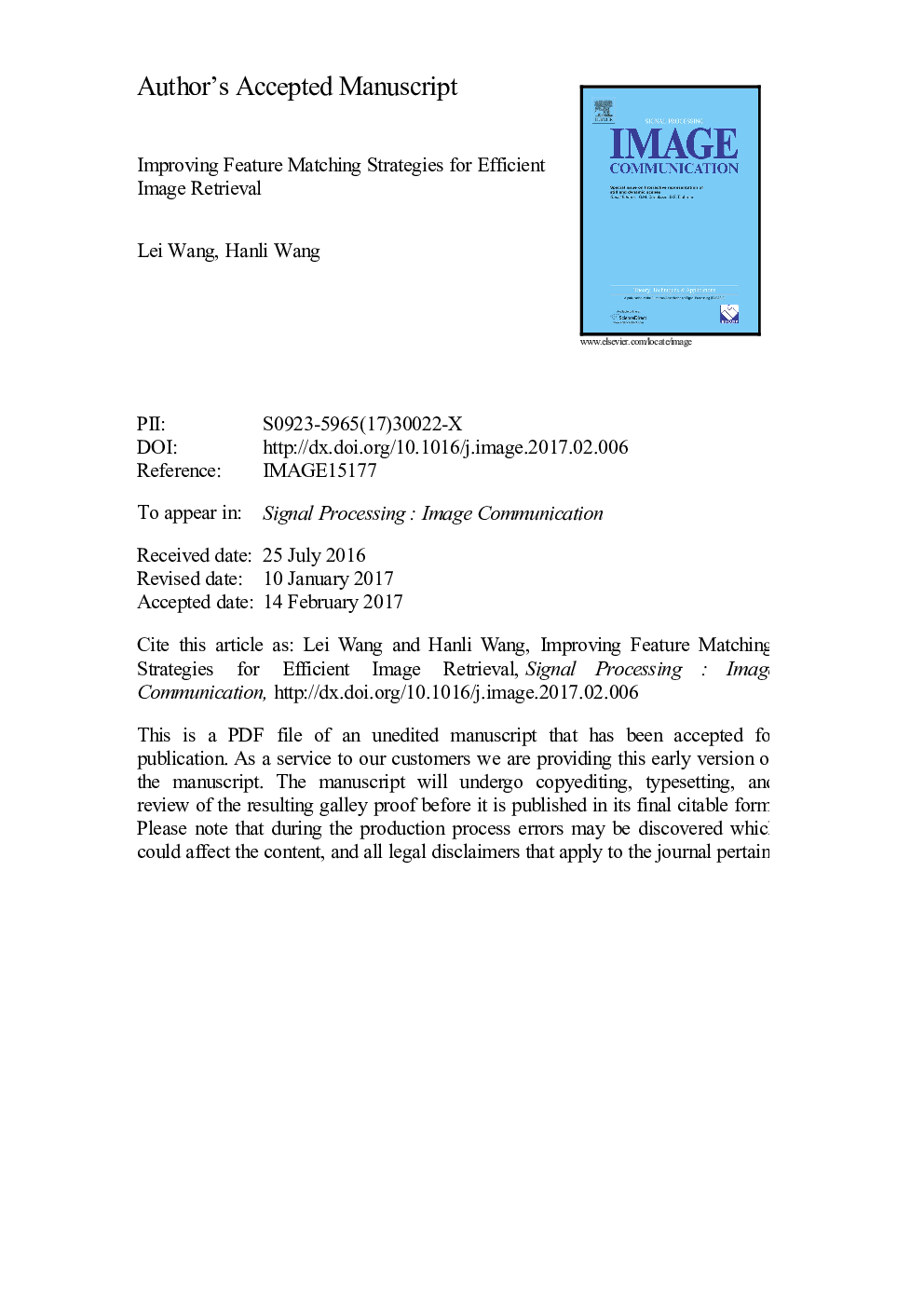| Article ID | Journal | Published Year | Pages | File Type |
|---|---|---|---|---|
| 4970488 | Signal Processing: Image Communication | 2017 | 27 Pages |
Abstract
A number of state-of-the-art image retrieval systems have been built upon non-aggregated techniques such as Hamming Embedding (HE) and Selective Match Kernel (SMK). However, the retrieval performances of these techniques are directly affected by the quality of feature matching during the search process. In general, undesirable matched results appear mainly due to the following three aspects: (1) the locality of local features, (2) the quantization errors and (3) the phenomenon of burstiness. In this paper, starting from the framework of SMK, an in-depth study of the integration of Twin Feature (TF) and Similarity Maximal Matching (SMM) is fully investigated. To be specific, two effective modifications based on TF and SMM are proposed to further improve the quality of feature matching. On one hand, the original float vectors of TF are replaced with efficient binary signatures, which achieve relatively high efficiency and comparable accuracy of retrieval. On the other hand, Dynamic Normalization (DN) is designed to effectively control the impact of penalization generated by SMM and improve the performance with almost no extra cost. At last, an efficient image retrieval system is designed and realized based on a cloud-based heterogeneous computing framework through Apache Spark and multiple GPUs to deal with large-scale tasks. Experimental results demonstrate that the proposed system can greatly refine the visual matching process and improve image retrieval results.
Keywords
Related Topics
Physical Sciences and Engineering
Computer Science
Computer Vision and Pattern Recognition
Authors
Lei Wang, Hanli Wang,
